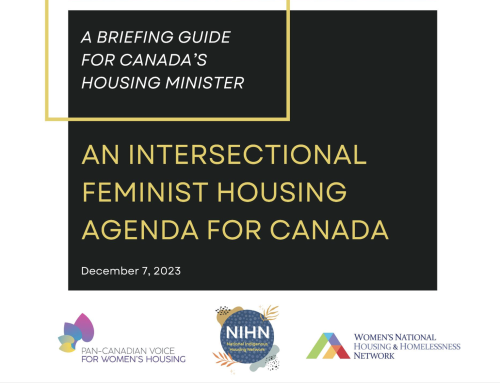Poverty in Quebec, Part 3: Poverty Reduction
The series will look at poverty in Montreal and Quebec. In the first article, Alison Smith asked why the level of chronic homelessness in the four largest cities in Canada (Vancouver, Calgary, Toronto and Montreal) is so similar. The second article looked at the social assistance system in Quebec, compared with the three largest provinces in Canada. This third and final article considers efforts to reduce poverty in Quebec.
The article is also available in French.
With the exception of British Columbia, all Canadian provinces have (or are developing) some type of poverty reduction strategy. The strategies are not always ambitious or successful, but they indicate a political commitment at the provincial level to the issue of poverty.
Québec has arguably been the most ambitious of the Canadian provinces in the area of poverty reduction, in part because of the law against poverty introduced in the National Assembly in 2002.
The law against poverty was unique in its content, which ambitiously sought to make Québec a place with the lowest levels of poverty in the developed world, but also in the way it was developed. In a truly bottom-up process, hundreds of community consultations and street parliaments led to the creation of a draft law against poverty. The Collectif pour un Québec sans pauvreté that led the process worked with a lawyer to ensure that the language of the bill was legally correct. In the year 2000, 2000 people symbolically adopted the draft law in front of the National Assembly in Québec City. Subsequently, a committee of three members of the national assembly (MNAs), from each of the three major parties, sponsored the introduction of the law in the national assembly.
The law against poverty passed with unanimity.
It took some time before the National Assembly finally implemented a plan to fight against homelessness. In 2004, two years after adopting of the law against poverty, the government of Québec (now a Liberal government) adopted an Action Plan to fight against poverty and social exclusion. The foundation of the Action Plan includes the principles of economic security and social inclusion through employment.
The plan was accompanied by $2.5 billion in funding (not all of which was “new” funding), which was used to increase the income offered to low-income families and individuals and to invest in social housing. Some social assistance benefits were indexed and supplemented in various ways, such as through a higher minimum wage and child assistance measures. A work premium was introduced, which would “make work more profitable” according to the government. For example, if a single person earned $5,000 per year, the government provided a work premium of $182; if the person’s income doubled $10,000, the work premium would more than double to $481, thus encouraging people to work more to get a greater supplement. The premium is much higher for single-parent families with one or more children. Also introduced was a universal Child Assistance measure targeted at low-income families.
The 2004 plan ended in 2009. A new plan to fight poverty was introduced in 2010, which was accompanied with a budget of $7 billion over five years ($1.3 billion of which was new funding). Some measures from the old plan, such as the work premium and the child assistance measure, were renewed in the 2010 plan; new measures, such as a Solidarity Tax Credit, were also introduced.
Government reports and academic analysis have indicated that these efforts to reduce poverty were most successful in lifting families (single or two-parent) with children out of poverty.
Single people who are able to work did not fair so well, however. A 2014 Government of Québec report provides excellent and nuanced research on the results of the policy to fight poverty ten years after it was originally implemented. According to the report, prior to the plan against poverty’s implementation in 2003, there were around 747,000 people who were low-income according to the MBM. Of these 747,000 people, 36.9% were single people, 19% were couples with children, 19.7% were single parent families. The remaining 24.4% were other types of families (couples without children or intergenerational families for example).
By 2013, the number of low-income people throughout the province rose to 842,000 (though the overall population of Quebec also rose by over 500,000 people between 2003 and 2013). 43% of low-income people were single people, compared to 36.9% in 2003. All other family types had gone down in terms of the percentage (by 1-2%) of the overall low-income population.
In other words, the province was able to lift some families and children out of poverty, but during this timeframe there were more single people experiencing poverty than before.
Most of the measures to reduce poverty were aimed at families with children, and indeed the provincial government’s efforts have been successful at lifting many families and children out of poverty. In 2004, social assistance benefit levels went up for these family types, and other measures were put in place to both supplement the income of families with children and to help parents get back into the labour market. There were efforts to help single people, but they were not as aggressive as they were for families. As a result, 10 years after the implementation of the poverty reduction strategy, poverty has actually increased among single people, the group of people most likely to experience homelessness.
In a Centre d’étude sur la pauvreté et l’exclusion (CEPE) study of the state of poverty in Québec in 2013, former CEPE president Alain Noël writes that Québec has made significant progress in reducing poverty among families since the introduction of the law against poverty. Nearing the end of the second plan to fight poverty, he writes that it is an opportune time to think about the next steps. Thinking ahead, he asks if it is possible to accomplish for single people what has been accomplished for families.
The province’s policies have undoubtedly been successful at preventing some people from becoming homeless; the first article in this series noted that people are less likely to experience homeless just because of poverty in Montréal than they are in Calgary or Vancouver. Despite the significant efforts that have been made to reduce poverty in Québec, arguably more aggressive and ambitious than any other province in Canada, the people who benefited most from the plan were families with children. This is certainly an important component of any plan to reduce poverty, and Québec’s results have been impressive in this respect.
But those benefits did not equally fall, and single people, the “family type” that is most likely to experience chronic homelessness, did not fare as well as others.
This is one of the reasons why, despite different provincial efforts to reduce poverty, chronic homelessness is so comparable across such very different cities and provinces.
Download the full series in PDF: Poverty in Quebec.
Alison Smith is a PhD Candidate at l’Université de Montréal. Her research is about homelessness in Canada.



